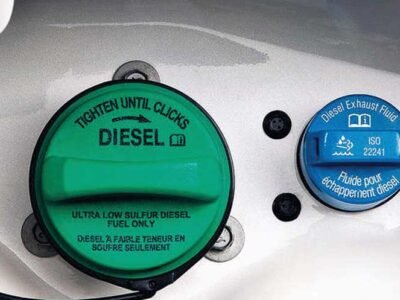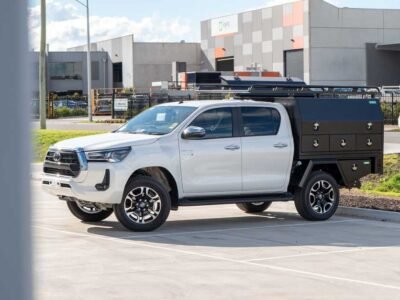The Volvo XC90 has long been an NHTSA and IIHS favorite, and for good reasons. The Swedish luxury SUV is one of the safest vehicles in the industry and is continuously setting benchmarks in Volvo Accessories safety technology. For instance, the 2017 and 2018 models boast IIHS’s Top Safety Pick Award, while the 2021-22 model received a Top Safety Pick+ accolade — the highest honor given by the IIHS. Furthermore, the Volvo XC90 also gets a perfect five-star Euro NCAP rating — not a small feat.
But what makes it so safe? Is it only the innovative safety features? What else does the XC90 have to make it better than any other SUVs in the segment? And does all that make it more complicated to work on? Will I specifically need a Volvo XC90 manual to perform regular maintenance because of all that advanced stuff?
Well, yes and no; let’s discuss.
Robust Body Made from Ultra-High-Strength Steel
The Volvo XC90 is a safety leader not just because of its innovative features but also due to its sturdy body. Indeed, the Swedish SUV is built like a tank and uses ultra high-strenth steel to protect occupants in case of a rollover. Besides, the National Highway Traffic Safety Administration (NHTSA) says the XC90 has a rollover rating of only 17.9%, which in the world of large luxury SUVs is very low.
And even if it happens, the body made from super-strong hot-formed boron steel will keep the cabin intact. Metalloids like boron enhance the tensile strength of steel by making it more resistant to bending. And this is a massive improvement if you consider the type of steel found in vehicles made post-2000. Most came with a tensile strength of around 500 megapascals, whereas the XC90s ultra-high-strength boron steel is rated around 1,200-1,500 megapascals.
Volvo’s current stance as the industry safety leader is a result of starting from the basics and improving the quality of the steel used to build its vehicles. Better quality steel doesn’t only reduce the vehicle’s overall weight but is also highly effective in controlling crash energy.
Passive Safety Features
It’s no secret that Volvo heavily invests in passive safety features, such as seatbelts, airbags, and crumple zones, to protect a vehicle’s occupants, and the XC90 is no exception. Indeed, the XC90 comes with a ton of these passive safety systems, including its noteworthy dual-stage airbags and highly sophisticated crash sensors triggering 8 airbags positioned at the front, rear, and overhead, safeguarding both front and rear occupants.
Apart from that, all seats have seatbelt pre-tensioners holding the occupants securely in place and Volvo’s Inflatable Curtain (IC) on all three rows, preventing head injury in case of a rollover.
Furthermore, engineers at Volvo have emphasized the XC90’s crumple zones. The SUV’s front structure is divided into two zones, using different steel grades. The softer outer layer acts as a crumple zone and absorbs impacts by reducing their magnitude and passing down the force to the stronger inner layer. This type of structural engineering is highly effective in saving the occupants’ lives.
Moreover, let’s not forget about Volvo’s initiative to protect the youngest occupants with the help of its ISOFIX attachment system. It is an internationally recognized car seat fitting mechanism securely locking the car seat using ISOFIX fixing points. If you need any help finding the location of these fixing points, have a quick look at your Volvo XC90 owner’s manual (they are a bit tricky for a first-time user).
Intellisafe Active Safety Features
Active safety features prevent an accident from happening in the first place, and this is where the XC90 flexes its capabilities. The luxury SUV is loaded with all the sophisticated crash mitigation technologies the 21st century’s automotive industry offers.
Indeed, the latest generation XC90 (2015-present) comes with Electronic Stability Control, Roll Stability Control, Driver Alert Control, Brake Assist System, Road Sign Information, and Cross-Traffic Alert System.
Furthermore, the XC90’s Whiplash Injury Protection System (WHIPS) activates during a rear-end collision and helps reduce spine and neck traumas at speeds as low as 8 mph.
Another interesting and life-saving feature is the Run-Off mitigation, reducing the XC90’s risk of accidentally “running off” the road, using feedback from a camera scanning the edges of the road and painted side markings. If the vehicle is on the verge of crossing the line, the system steers it back on the road, preventing a mishap — yes, that’s how advanced the XC90 is!
Moreover, the XC90 also boasts other prominent features such as a Speed Limiter, Cruise Control System, Volvo City Safety, and Park Assist Pilot, increasing riding convenience and safety.
However, don’t get too comfortable thinking that the XC90 is some invincible tank providing the same level of passenger protection even when left unmaintained for years. After all, those advanced safety features don’t count if the very basic mechanisms of your vehicle start to fall apart.
For instance, the Brake Assist System is effectively useless if your XC90 runs on worn-out brake pads. Hence, it is crucial to conduct scheduled servicing of your vehicle by following a trusted XC90 service manual or taking it to a mechanic. And if you don’t have a repair manual for your SUV yet, head over to eManualOnline — their repair manuals cost less than a single visit at the shop and will pay for themselves after the first oil change.
Last Words
The XC90’s dominance in safety results from years of extensive research and development. The Swedish giant invested millions in developing various safety technologies now widely renowned worldwide and designed the XC90 to protect you at all costs.
The least you can do is take care of it by staying on top of your SUV’s maintenance schedule found in your Volvo XC90 repair manual. Moreover, keeping your vehicle in check is always your best bet to make sure it holds its resale value and keeps you safe in the long run — it will be all worth it in the end.
But, the single most important tip we can give you regarding safety is to respect the road conditions and drive carefully. The XC90 might be great at mitigating crashes, but it doesn’t come close to the human factor. So, concentrate on the road and use the SUV’s safety features only as a backup — better safe than sorry!












